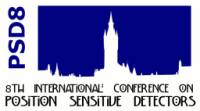Speaker
Dr
Christopher Saunter
(University of Durham)
Description
Adaptive Optics systems measure and correct dynamic optical distortions,
often atmospheric turbulence, to improve overall system performance. Such
systems have grown from their astronomical inception in 1953 to cover many
fields including ophthalmology, high power lasers, communication, optical
storage and astronomy.
There are many different systems but common to all is the need to measure
optical distortions. often at high spatial resolutions and kilohertz
rates. Various forms of optics such as the Shack-Hartmann sensor are used
to develop optical turbulence into patterns of moving light that may be
sensed and processed to drive the corrective mirrors.
Initially vidicon CRT technology was used, being replaced by many forms of
position sensing detectors including QPDs, APDs, fibre coupled PMT arrays
and MCP devices. Modern astronomical systems are converging on the use of
CCD sensors often with on-chip electron multiplying gain, driven by the
need for high framerate and spatial resolution at extremely low light
levels, while CMOS sensors hold promise for higher light level
applications. In this talk an overview of sensors in modern adaptive
optics, looking at the benefits of moving to image sensors , and what
further development may occur.
Author
Dr
Christopher Saunter
(University of Durham)
Co-author
Dr
Gordon Love
(University of Durham)

